
Ship Design & Construction: Laurie Balan, COO, Genoa Design
in Newfoundland & Labrador as a mechanical engineer, and I thought at the time I was going to spend my career in the offshore oil and gas industry because it was booming at the time. After a short stint overseas, I returned to the Atlantic provinces and was introduced to the working world of naval architecture and marine engineering. Over the next decade or so, I was engaged in design work, engineering changes for ships in operations, so the maintenance of ships in service support programs, mainly for the Canadian Navy, the Canadian patrol frigates.After that [I transitioned] to newbuilds, as the
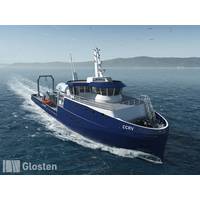
Hydrogen-Hybrid Research Vessel Earns AIP
Glosten was awarded an Approval in Principle (AIP) by the American Bureau of Shipping (ABS) for the design of UC San Diego’s new hydrogen-hybrid Coastal-Class Research Vessel (CCRV). The CCRV will be operated by Scripps Institution of Oceanography and feature a propulsion system that uses hydrogen fuel cells for zero-emissions operation.Glosten and the project’s electrical integrator, Siemens Energy (SE), completed the preliminary design for the CCRV in March 2024. As an uninspected, California Air Resource Board (CARB)-compliant, ABS-classed vessel and an alternative design under
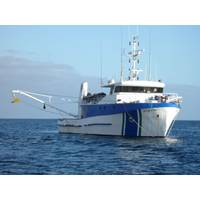
Glosten to Design Research Vessel for SARDI
Glosten announced it has been selected to develop the concept design of a coastal research vessel for the South Australian Research and Development Institute (SARDI).The naval architecture and marine engineering firm said it has been working closely with SARDI to refine the vessel’s capabilities and is beginning to develop a design that best fits their operational requirements: a 30-37-meter monohull with extended range, a launch and recovery system, the ability to perform fisheries research, and a multi-mission-friendly layout.The new vessel will replace the R/V Ngerin and support SARDI’s
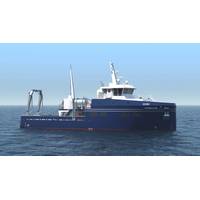
Glosten Tapped to Design Scripps' New Hydrogen-hybrid Research Vessel
UC San Diego’s Scripps Institution of Oceanography today announced that naval architecture and marine engineering company Glosten has been selected as the naval architect for the university’s new California coastal research vessel. The new vessel will feature a first-of-its-kind hydrogen-hybrid propulsion system.Selected after participating in the university's request for proposal process, Glosten will provide the preliminary design, contract design and detailed design for the research vessel to be operated by Scripps Oceanography.“This vessel will be the first of its kind
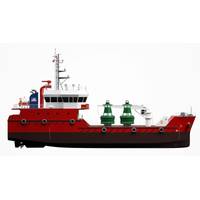
Shipbuilding: Med Marine Tapped to Build Buoy Tender for Port Qasim
Earlier this year Med Marine signed a contract with the Port Qasim Authority of Pakistan (PQA) for the delivery of a Conventional Twin Screw Buoy Tender Vessel, MED-B4500, for buoy-laying in the port located in the city of Karachi. MED-B4500 is a 45 x 11.8 meter vessel built to facilitate a crew of 16. The vessel design is from SeaTech Solutions, Singapore, and it will be outfitted at Ereğli Shipyard in the Zonguldak region of Turkey, with delivery is scheduled for mid-2023.45M Buoy Laying Vessel Length, o.a.: 45mBreadth, molded: 11.8mDepth, molded: 5.1mSpeed: 12 knotsCrew: 16Owner: Port
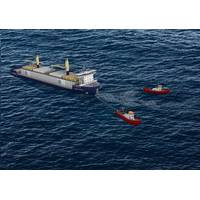
Ship Designed to Collect Ocean Plastic and Convert It to Clean Hydrogen
oceans and other bodies of water by 2030, an assessment by the UN Environment Program (UNEP) found.Developed to help tackle this growing environmental problem, the new concept ship is the brainchild of New York-based hydrogen generation and energy storage solutions company H2-Industries and German naval architecture company TECHNOLOG Services. The vessel will be at least 150 meters in length, though its exact size remains to be determined at the design stage, depending on optimal storage capacity.The plan is for the ship to travel at four knots with the waste plastic collected by two smaller vessels towing
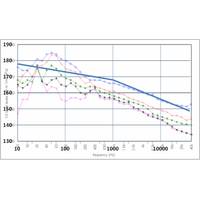
Underwater Radiated Noise: What’s Missing for Design?
specialists. As a developer of engineering tools for various aspects of hydrodynamic, propulsion system, and propeller performance simulation, as well as over three decades of experience in propeller design and analysis, I am concerned that there are no tools currently available and easily accessible to naval architects and designers for the engineering prediction of propeller-driven noise.URN assessment for designThe writing is on the wall. URN is expected to soon be formally classified as a pollutant, with all of the regulation and mitigation requirements that come with it. Prediction of, and the design
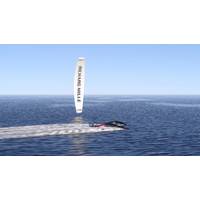
SP80: 80-knot Sailboat Demands High-Performance Sensing
Fischer Connectors’ solutions support the transmission of sensor data for the wind-powered SP80 boat setting out to reach the phenomenal speed of 80 knots, which if achieved will break the long-standing world sailing speed record of 65.45 knots.During the development of its boat that is now close to its final design phase, the SP80 team has chosen Fischer Connectors for the data-transmission solutions interconnecting the various sensors that will equip the boat and its pilot to break the world sailing speed record. The technical challenge is to sail at a speed of 80 knots (148.16 km/h)
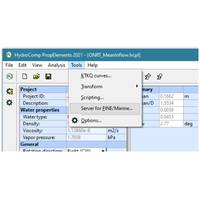
HydroComp Updates PropElements 2021
Development in 2021 for HydroComp PropElements offers new features across the range of applications, including improved wake-adapted propeller design and analysis.PropElements + FINE/Marine couplingUser testing is underway for the new coupling of HydroComp PropElements with NUMECA’s FINE/Marine CFD software. One of the challenges of full self-propulsion analysis with CFD is the computational load required to model the propeller within the 3D space. When coupled with FINE/Marine as a higher-order actuator disk replacement, PropElements calculates velocity fields and propeller body forces for the



 December 2025
December 2025





